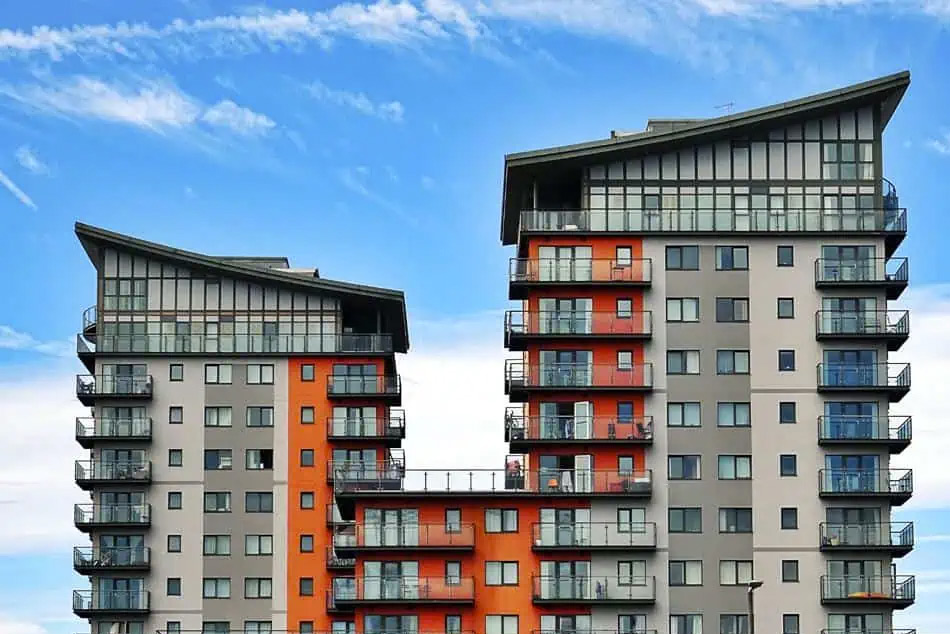It’s been a tough time for thousands of homeowners in the UK with the changes in safety legislation for cladded buildings after the Grenfell fire. But there’s finally some good news – it finally appears that there is some light at the end of the tunnel!
There have been positive changes in the guidance for properties above 11 meters high, which is a step in the right direction.
What problems had cladding had on mortgages?
The absence of an External Wall System (EWS1) form has been a significant challenge for mortgage lenders in assessing the value and safety of properties with cladding issues. Many properties either did not have an EWS1 form or the forms did not comply with the regulations, making it difficult for lenders to determine the risk associated with the property and approve a mortgage.
The EWS1 form is a crucial document used to assess the fire safety of external wall systems in buildings, including cladding, and is often required by lenders to ensure compliance with safety regulations. However, the lack of available EWS1 forms or non-compliant forms has caused delays and challenges in obtaining mortgages for properties affected by cladding issues.
What’s changed?
Since January 2023, the big 6 banks in the UK will be offering mortgages again on medium and high-rise buildings with cladding. This is a positive step towards providing more financing options for homeowners who have been facing challenges due to changes in safety legislation.
Who are the ‘Big six’?
- Lloyds Banking group (including Halifax)
- Nationwide Building Society
- NatWest
- Santander
- Barclays
- HSBC
This could pave the way for other banks and financial institutions to follow suit.
Requirements to secure a mortgage on a property affected by cladding
The Royal Institution of Chartered Surveyors (RICS) has provided updated guidance on properties affected by potentially dangerous cladding.
To secure a mortgage, evidence must now be provided that the cladding will be either removed or covered by leasehold protections or a government scheme:
- Leaseholder protections
- Government Schemes
- Confirmation that the building will be repaired
More information can be found on the RICS website.
To see if we can help you contact our mortgage brokers today.
Speak To an Expert
Whether you’ve just had an offer accepted on a property and you’re ready to go, or you’re simply wondering how much you need to save for a deposit, it’s never too soon to reach out.
Recognised remediation schemes in England are:
- The Developer Remediation Contracts (11 metres+)
- The Medium Rise Scheme (11-18 metres)
- The Building Safety Fund (18 metres+)
How do I check if I am eligible for financial assistance with the removal of unsafe cladding?
In some cases, leaseholders may no longer be held responsible for the costs of removing unsafe cladding from buildings. The UK government has also created an online checker to help you determine if they are eligible for financial assistance or support in dealing with cladding-related issues.
What interest rates are available to properties affected by cladding?
If the building meets the criteria mentioned above and qualifies for remortgaging, you should be able to obtain mortgage rates similar to those for buildings that are not affected by cladding issues.
However, if you are unable to secure a mortgage with lenders who have revised their policies, you may face challenges in obtaining competitive rates. Nevertheless, it is anticipated that many other lenders will follow suit with the big six in the near future, which could result in more options for competitive mortgage rates for properties with cladding issues.
Remortgages for flats affected by cladding issues
The cladding issues have not only affected home buyers, but also existing home owners who have been unable to remortgage due to the stringent requirements imposed by lenders.
Many have been forced to remain with their current lenders and may have faced less competitive deals as a result. The changes in guidance and the potential for more lenders to offer mortgages on properties with cladding issues should provide more options for these home owners, giving them the opportunity to explore more competitive deals and potentially improve their financial situation.
Leaseholders can now buy and sell with confidence
The decline in flat sales has been significant, with buyers being hesitant or unable to purchase properties affected by cladding issues. This has likely impacted property prices.
However, with the changes in guidance and the potential for more lenders to offer mortgages on properties with cladding issues, it is hoped that there will be a positive impact on property prices.
How to remortgage without an EWS1 form
Obtaining a remortgage without an EWS1 form has become much more feasible compared to 2022 when it was extremely challenging. As long as you have the necessary supporting documents to confirm that the building will be remedied or is covered by a relevant scheme, you should be in a better position to secure a remortgage.
For more info on remortgaging, please contact a member of the Strive team, by emailing info@strivemortgages.co.uk or call us on 01273 002697.




